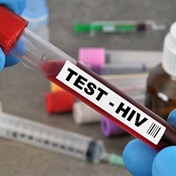Investigators are looking into two main paths toward a cure for Aids based on the stunning stories of a small group of people around the world who have been able to overcome the disease.
Despite progress in treating millions of people globally with antiretroviral drugs, experts say a cure is more crucial than ever because the rate of HIV infections is outpacing the world's ability to medicate people.
"For every person who starts antiretroviral therapy, two new individuals are infected with HIV," Javier Martinez-Picado of the IrsiCaixa AIDS Research Institute in Spain told the International AIDS Conference in Washington.
Route to a cure
While a cure remains a distant prospect, he said scientists can now "envision a cure from two different perspectives," either by eradicating the virus from a person's body or coaxing the body to control the virus on its own.
The most extraordinary case of an apparent cure has been seen in an American man in his 40s, Timothy Ray Brown, also known as the "Berlin patient," who was HIV-positive and developed leukaemia.
Brown needed a series of complex medical interventions, including total body irradiation and two bone marrow transplants that came from a compatible donor who had a mutation in the CCR5 gene which acts as a gateway for allowing HIV into the cells.
People without CCR5 appear to be immune to HIV because, in the absence of that doorway, HIV cannot penetrate the cells.
"Five years after the transplant the patient remains off antiretroviral therapy with no viral rebound," said Martinez-Picado. "This might be the first ever documented patient apparently cured of an HIV infection."
However, while the case has provided scientists with ample pathways for research on future gene therapies, the process that appears to have cured Brown carries a high risk of death and toxicity.
"Unfortunately this type of intervention is so complex and risky it would not be applicable on a large scale," he said.
Brown is scheduled to address the media in Washington, in a bid to boost research toward a cure as the US capital hosts the world's largest scientific meeting on HIV/AIDS.
The 'controllers'
Another group of intense interest is known as the "controllers," or people whose bodies appear to be able to stave off HIV infection.
One type, known as the "elite controllers," test positive for HIV but do not appear to have the virus in the blood, even without treatment. Researchers estimate there may be a few hundred of these people in the world.
Another type is the post-treatment controllers, or people who started therapy early and are able to stop it without seeing the virus rebound. Some five to 15% of HIV-infected people may fit this category.
More details on a group of "controllers" in France known as the Visconti Cohort is expected to be released at the meeting this week, as international scientists share their latest data in the hunt for a cure.
"We now actively talk of potential scientific solutions in a way perhaps we weren't some years ago," said Diane Havlir, AIDS 2012 US co-chair and professor of medicine at the University of California, San Francisco.
(Sapa, July 2012)
Read More:




 Publications
Publications
 Partners
Partners














